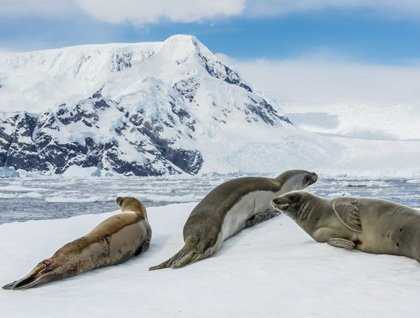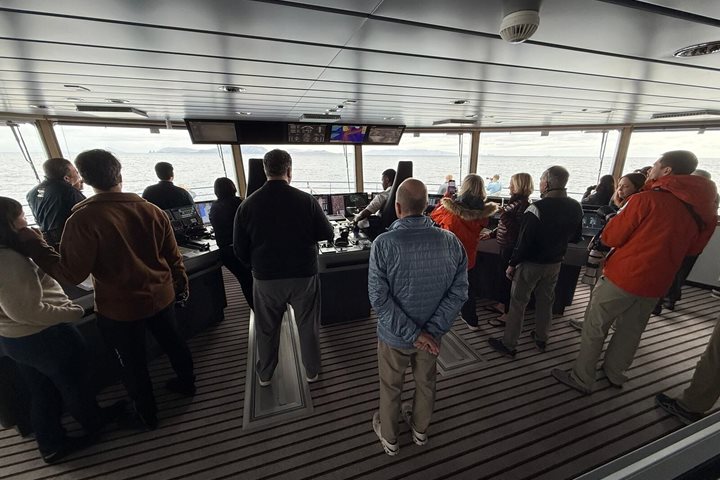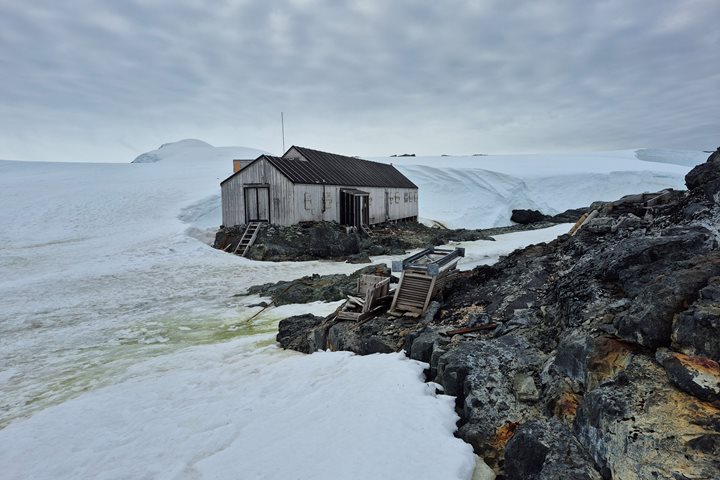Most guests and staff who have returned to the White Continent multiple times realize that while it might be the animal life that lures curious adventurers to Antarctica it is the ice and all of its iterations that keeps us coming back! Today all on board National Geographic Explorer were privy to the wonders of ice, and all of its glorious forms!
Early morning found Explorer surrounded in both glacial and sea ice deep in Neko Harbour. Some intrepid hikers chose to climb for an overlook of the glaciers surrounding the bay, and were rewarded for their efforts with views of calving events, minor avalanches, and close -up glimpses of the deeply crevassed ice. Others chose to get up close and personal with ice right at sea level with a tour by Zodiac. Perhaps the best ice floes to stop and examine were those that held an added bonus…seals!
Weddell seals are named after James Weddell who on January 16, 1823 was deep in pack ice at 74° south latitude in the sea that now also bears his name. He was the first to discover this species of pinniped, which we now know is the most southerly mammal on the planet and lives almost exclusively in the ice, even as far south as 78°. Weddell seals are amongst the largest of all seals, and are very accomplished divers, with the ability to dive to depths of almost half a mile while holding their breath for well over an hour!
Afternoon again found us surrounded by snow-capped peaks and glaciers in the aptly named Paradise Bay. Huge icebergs bear testament to how active the glaciers are in this area. In addition to views by Zodiac, many chose to explore the wonders of the ice here via kayak. We were again rewarded with close encounters of seals hauled out on ice, both Wedddell and crabeater seals.
The crabeater seal is absolutely misnamed, as there are no crabs in Antarctica! While the origin of the common name is in some debate, we would suggest the name be changed to krilleater seal, as this species eats as much as 20-25 times its body weight in krill each year! With the loss of over two million whales to the whaling industry in the 20th century, crabeater seals have dramatically increased their numbers, with perhaps as many as 15 million individuals currently in the population, making it easily the most numerous pinniped species on the planet. Crabeater seals catch their small prey with the use of highly modified pentacospid cheek teeth, lobed post canine teeth that actually form a sieve to help strain krill right out of the water!
The incredible weather held, and the golden hour lasted long into the evening as official sunset finally came at 13 minutes to midnight. It was an end to an absolutely spectacular Antarctic day, one that certainly deserves our “Seal of Approval.”






